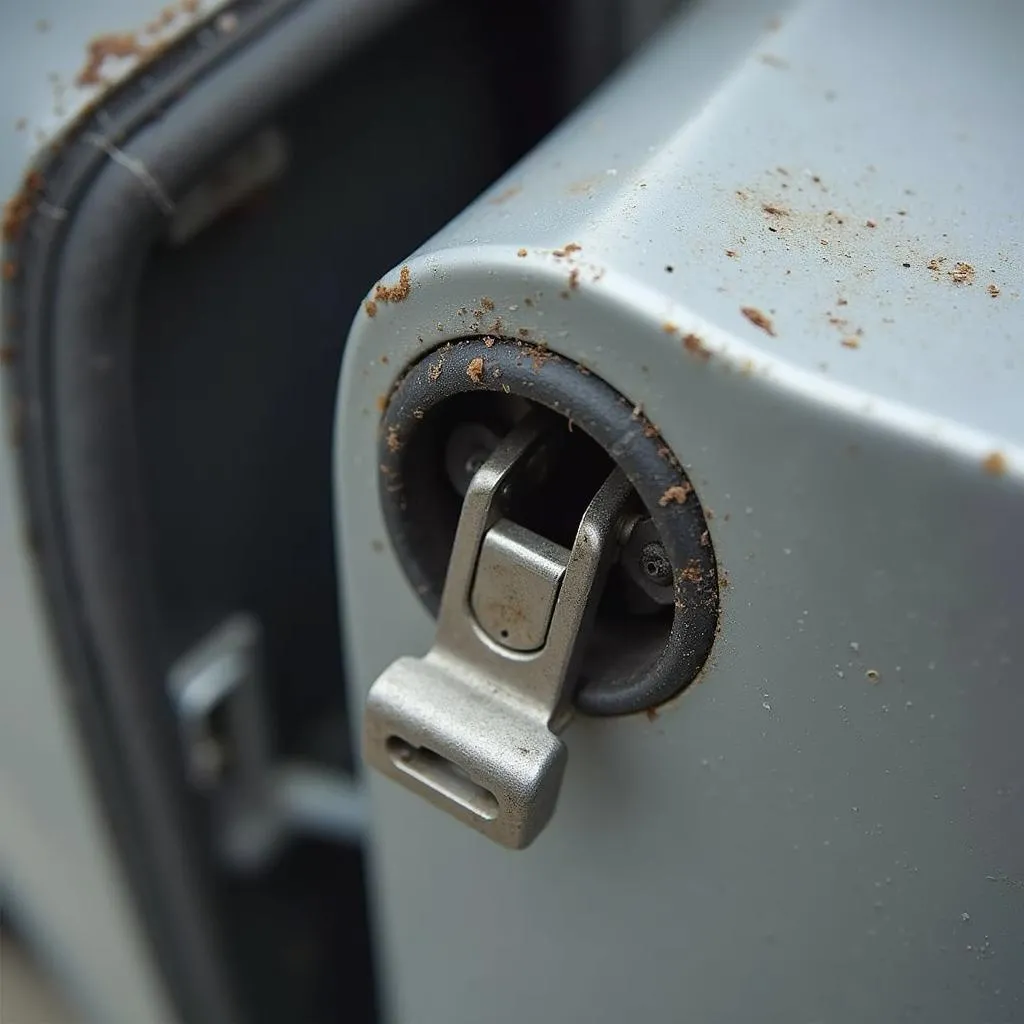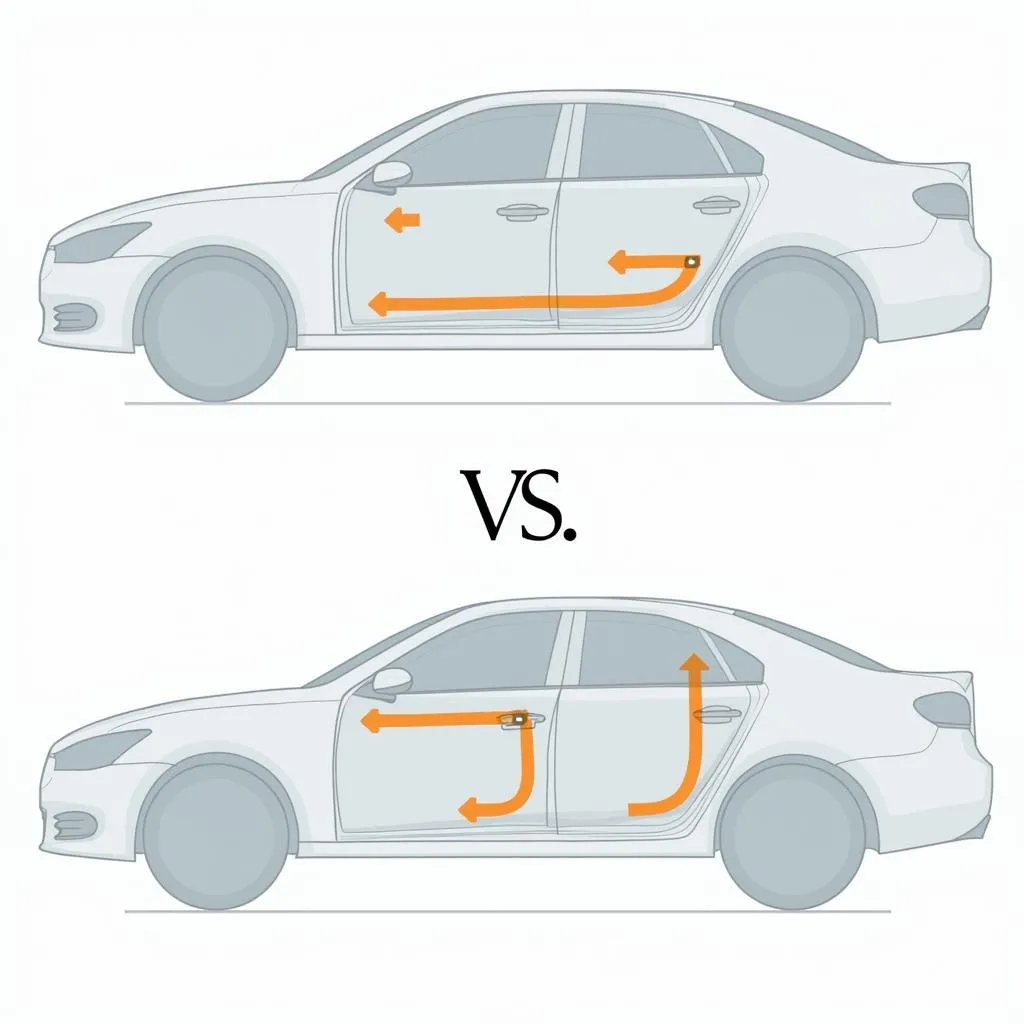Every car owner knows the feeling: you get in the car, close the door, and – nothing. Or rather: not the familiar, solid sound of a properly closing door. Instead, a rattling, unhealthy noise that immediately makes you sit up and take notice. The culprits are often worn locks and seals.  Car door lock and seal
Car door lock and seal
They may be small and inconspicuous, but their importance for comfort, safety, and the value retention of the vehicle is enormous.
What Exactly Are Locks and Seals and Why Are They So Important?
Let’s start with the basics. Locks, simply put, are mechanical or electronic devices that control access to the vehicle’s interior. They protect against theft and ensure that the doors do not open unintentionally while driving. Seals, on the other hand, usually made of rubber or plastic, ensure that doors, windows, and the trunk close tightly.
But their function goes far beyond the obvious. Intact seals not only keep wind and weather out, but also reduce road noise and vibrations in the interior. They thus contribute significantly to driving comfort.  Function of car locks and seals Furthermore, they protect against corrosion by preventing moisture and dirt from entering the vehicle interior.
Function of car locks and seals Furthermore, they protect against corrosion by preventing moisture and dirt from entering the vehicle interior.
Signs of Wear: How Do I Recognize Defective Locks and Seals?
Like every component in a car, locks and seals are subject to natural wear and tear. This manifests itself through various symptoms:
- Difficulty opening or closing doors: The key is difficult to turn, the door does not close properly, or it pops open again.
- Unusual noises: Rattling, squeaking, or whistling when opening, closing, or while driving, especially on uneven roads.
- Increasing wind noise: Driving and wind noise increasingly penetrate the interior, especially at higher speeds.
- Moisture in the vehicle interior: After rain showers or car washes, water stains can be found on the seats or in the footwell.
- Visible damage: Cracks, porous areas, or deformations on the seals.
“Ignoring signs of wear can lead to consequential damage,” warns master mechanic Andreas Schmidt from Hamburg. “Rust on the door hinges or in the area of the locks is not uncommon if seals are not replaced in time. In the worst case, even vehicle safety can be impaired.”
What to Do with Defective Locks and Seals?
The good news: In most cases, replacing locks and seals is relatively straightforward and inexpensive.  Repairing car locks and seals A wide selection of spare parts can be found at auto parts dealers and online. If you are skilled with your hands, you can carry out the replacement yourself. Detailed instructions and helpful videos can be found in abundance on the internet.
Repairing car locks and seals A wide selection of spare parts can be found at auto parts dealers and online. If you are skilled with your hands, you can carry out the replacement yourself. Detailed instructions and helpful videos can be found in abundance on the internet.
However, caution is advised: For more complex repairs, for example to the electronic locking system, you should definitely consult a specialist workshop.
Regular Maintenance and Care: How to Keep Locks and Seals Functioning for a Long Time
As is often the case, prevention is better than cure. With simple measures, the service life of locks and seals can be significantly extended:
- Regular cleaning: Locks and seals should be regularly cleaned of dirt and deposits.
- Care with special agents: Silicone spray or rubber care products keep the seals supple and prevent cracking.
- Avoidance of extreme temperatures: Both extreme heat and cold affect the seals.
- Careful opening and closing of doors: Slamming the doors unnecessarily stresses both locks and seals.
More Interesting Topics About Cars
- Brake maintenance: What you should pay attention to and when a change is due.
- Chassis adjustment: How to improve handling and tire wear.
- Charging your car battery correctly: Tips and tricks for a long service life.
Visit our website autorepairaid.com for more helpful information about maintaining and repairing your vehicle. Our automotive experts are always available to answer your questions!

